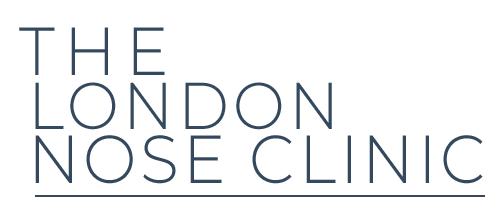Runny Nose
When you start sneezing and your nose starts to run, it could be allergies or a sinus infection. It can be difficult to distinguish the two so you’ll need assessment and treatment from an ENT specialist.
When you start sneezing and your nose starts to run, it could be allergies or a sinus infection. It can be difficult to distinguish the two so you’ll need assessment and treatment from an ENT specialist.
When you start sneezing and your nose starts to run, it could be allergies or a sinus infection. It can be difficult to distinguish the two so you’ll need assessment and treatment from an ENT specialist.
A runny nose can be annoying and uncomfortable but it is usually temporary, although you should seek medical advice if it fails to clear by itself or is accompanied by other symptoms. A runny nose can be caused by anything that irritates the nasal tissues, such as an infection or allergy. Some people have a chronically runny nose for no apparent reason — a condition called nonallergic rhinitis or vasomotor rhinitis.
Rhinitis literally means inflammation of the nose and refers to the inside lining of the nose. The inflammation causes swelling of the lining, excess mucus production and irritation. The swelling causes the sensation of blockage and the excessive mucus production leads to a runny nose and/or too much mucus going backwards from the nose to the throat known as post nasal drip. If the rhinitis is caused by an allergy then the patient may experience itching of the nose, eyes and throat. Rhinitis also causes sneezing.
Rhinitis is a very common condition. The severity of symptoms is extremely variable, however. Some people have mild nose irritation which comes and goes and causes little trouble and others have severe symptoms causing discomfort, distress and difficulty carrying out daily activities.
+ WHAT CAUSES RHINITIS?
The causes of persistent rhinitis can be divided into allergic and non-allergic.
The most common allergies causing rhinitis are pollen (hay fever), house dust mite and pets, most commonly cats. Hay fever is seasonal and occurs during a particular period each year.
Symptoms of allergy in the nose are due to the immune system reacting to the allergen (the individual cause of the allergy). Cells in the lining of the nose release histamine and other chemicals when they come into contact with the allergen. This causes inflammation in the nose with swelling, excess mucus production and irritation. Allergic rhinitis can be associated with asthma and eczema and can run in families.
Rhinitis commonly occurs without an allergic cause and there is often no identifiable cause for the condition. Many factors can influence the nasal lining however including:
Rhinitis medicamentosa is the name given to rhinitis that can occur due to the overuse of nasal decongestant sprays. These sprays are used to relieve a blocked nose and they reduce swelling inside the nose by causing blood vessels in the nose to constrict. However, with prolonged use, they cause rebound nasal congestion which is more severe than the original swelling. The temptation is to use yet more decongestant and a vicious circle can be set up. A similar problem can occur in people who abuse cocaine.
In some people, no cause for their persistent rhinitis is found and it is called idiopathic or vasomotor rhinitis.
+ WILL I REQUIRE A TEST FOR RHINITIS?
You may require allergy tests if allergic rhinitis is suspected. These can be in the form of skin prick tests or blood tests.
+ WHAT IS THE TREATMENT FOR RHINITIS?
The commonly used treatment options for allergic rhinitis include:
In some cases, other forms of medication are required. Severe allergic rhinitis can sometimes be treated with immunotherapy. This consists of a course of tablets or injections which modify your immune system in order to prevent the allergic reaction from occurring.
The main form of treatment for this is a steroid nasal spray although sprays to reduce secretion from the nose and nasal douching are also used.
This can be indicated when medical treatment has failed or if the rhinitis is associated with sinusitis (see the section on sinusitis) or large adenoids (see the section on adenoids). Nasal surgery for rhinitis involves reducing the size of the nasal turbinates. These are extensions of the side wall of the nose which become swollen in rhinitis.
The sinuses are air-containing cavities situated in the cheeks, between the eyes and in the forehead. They produce mucus which drains into the nose and can be regarded as extensions of the nose. Rhinitis can be associated with blockage and inflammation of the sinuses (sinusitis).
Sinusitis can be ‘acute’, for example, when associated with a cold or flu or ‘chronic’ when the condition is ongoing.
+ WHAT INVESTIGATIONS DO YOU PERFORM FOR SINUSITIS?
As well as allergy tests the patient will require imaging of the sinuses to confirm the diagnosis. This is usually a CT scan although sometimes an MRI is performed.
+ WHAT DOES SINUSITIS TREATMENT INVOLVE?
Treatment consists of:
Surgery involves opening the drainage points from the sinuses to the nose and removing inflamed tissue. The aim of the surgery is to enable the sinuses to secrete mucus freely into the nose without obstruction and to allow the lining of the sinuses to become healthy.
Surgery is performed using small endoscopes that project an image of the inside of the nose and sinuses onto a television monitor allowing the surgeon to operate with fine instruments inside the nose using the monitor as a guide. This is called endoscopic sinus surgery or functional endoscopic sinus surgery (FESS). No cuts are made on the outside of the nose or face. Sometimes small balloons are used to dilate passages between the nose and sinuses in a procedure called balloon sinuplasty.
